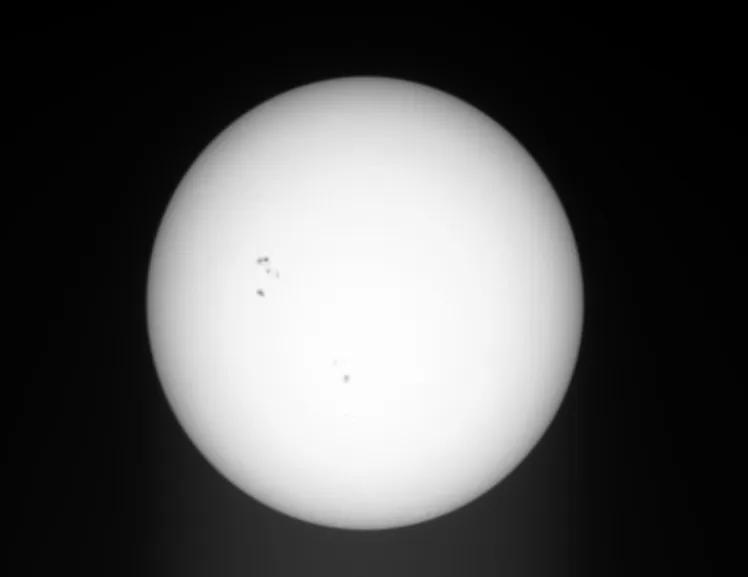我是一名新手,对编程有些陌生。
我有一个bmp格式的16位太阳图片。这张图片看起来像一个白色圆圈,黑色背景。

我想要找到圆圈并确定它在x,y坐标上的中心点。
这是我的脚本:
import cv
import numpy as np
orig = cv.LoadImage('sun0016.bmp')
grey_scale = cv.CreateImage(cv.GetSize(orig), 8, 1)
processed = cv.CreateImage(cv.GetSize(orig), 8, 1)
cv.Smooth(orig, orig, cv.CV_GAUSSIAN, 5, 5)
cv.CvtColor(orig, grey_scale, cv.CV_RGB2GRAY)
cv.Erode(grey_scale, processed, None, 10)
cv.Dilate(processed, processed, None, 10)
cv.Canny(processed, processed, 5, 70, 3)
cv.Smooth(processed, processed, cv.CV_GAUSSIAN, 15, 15)
storage = cv.CreateMat(orig.width, 1, cv.CV_32FC3)
cv.HoughCircles(processed, storage, cv.CV_HOUGH_GRADIENT, 1, 16.0, 10, 140)
for i in range(0, len(np.asarray(storage))):
print "circle #%d" %i
Radius = int(np.asarray(storage)[i][0][2])
x = int(np.asarray(storage)[i][0][0])
y = int(np.asarray(storage)[i][0][1])
center = (x, y)
print x,y
cv.Circle(orig, center, 1, cv.CV_RGB(0, 255, 0), 1, 8, 0)
cv.Circle(orig, center, Radius, cv.CV_RGB(255, 0, 0), 1, 8, 0)
cv.Circle(processed, center, 1, cv.CV_RGB(0, 0, 0), -1, 8, 0)
cv.Circle(processed, center, Radius, cv.CV_RGB(255, 0, 0), 3, 8, 0)
cv.ShowImage("sun0016", orig)
cv.ShowImage("processed", processed)
cv_key = cv.WaitKey(0)
当我运行这个程序时,我发现太阳的边缘是一个带有中心的圆形,但非常不精确。请注意设置参数HoughCircles模块以精确搜索圆形。谢谢。